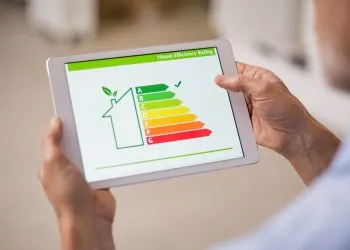A new mortgage which offers reduced rates to borrowers who improve the energy efficiency of their home after six months has been launched by Saffron Building Society.
 The lender has created the new Green Mortgage for people buying period properties or for borrowers who need to remortgage and make improvements on a home they currently own.
The lender has created the new Green Mortgage for people buying period properties or for borrowers who need to remortgage and make improvements on a home they currently own.
The borrower receives the rate relief for the remainder of the fixed rate period when works undertaken on the property produce a one-step rise in the Energy Performance Certificate (EPC) rating – as long as this is above an E.
It comes in the month the government is launching its Green Homes initiative. The scheme will offer up to £5,000 towards essential upgrades to the home, which will include loft and cavity wall insulation, glazing upgrades and installation of solar panels.
Laura Bright, senior product manager at Saffron Building Society who developed the retro-fit mortgage said: “When we brought the green mortgage product to the market, it was our intention to allow customers to benefit from their efforts to improve the energy efficiency of their home.
“We soon realised that the understanding of how to do this was sparce, so to help our current and future customers we have created our Green Hub to offer tips, advice and information to those making improvements to their homes.”
You can visit the Green Hub by going to the Saffron Building Society website and clicking on the Green Hub.
You can find out more about the Green Mortgage by speaking to a mortgage broker who will be able to provide details.
[box style=”4″]
Top Tips for improving your EPC
While many new builds and modern homes already have built-in features which improve the energy efficiency and green potential, many older homes require upgrades to improve the EPC rating.
 Indeed, Saffron said if you are moving into a new-build estate, on the outskirts of the city, the chances are your energy efficiency rating is pretty good.
Indeed, Saffron said if you are moving into a new-build estate, on the outskirts of the city, the chances are your energy efficiency rating is pretty good.
However, when you consider semi-detached or terraced properties – period, and character buildings – many would have been built before any of the common, recent building regulations were even considered.
For anyone in this situation, the building society has offered some quick, easy and cost-effective ways to improve the energy rating of the building.
Step 1: Change the bulbs and possibly fittings
It may sound like common sense but changing light bulbs from traditional filament bulbs to LEDs will make a massive difference.
Many do not realise that a traditional light bulb uses 5% of the energy used for light and 95% goes on producing heat. Changing strip lights in a kitchen to LED downlighters can make all the difference.
Step 2: Loft and Cavity Wall Insulation
Homes built after the 1920s have two external walls with a cavity between. Filling this with insulation could save up you up to £140 annually.
Upgrading loft insulation is another way to improve the energy efficiency of your new home and cost save you £150 per year – and costs on average just £300 to have installed – meaning you will get your money back in just two years.
Step 3: Upgrade your boiler
Heating systems are at the forefront of a property’s EPC rating, as 55% of the utility costs of a home originate from heating a home.
An efficient boiler upgrade is key, it is costly (between £1-3,000) but upgrading can boost your EPC by up to 40 points so definitely worth the investment.
Three of the top five energy companies offer grants for new boilers, including E.on, EDF and Npower – worth reviewing their offers and changing supplier if this could benefit your green credentials.
Step 4: Improve the glazing
In most homes, improving the glazing to double or triple is common sense with many homes having had this upgrade already.
However, with some older properties, you may not be able to upgrade or change the windows. What are the other options? Adding complementary secondary glazing is a great option, and companies have worked hard to ensure it maintains the character of the home and provides the energy efficiency you need. Clearview is a great one to check out.
Step 5: Install a Smart Meter
Smart meters offer a real-time update on your energy consumption. Although having the meter does not immediately improve your energy efficiency, it does provide you with insight required to understand when, how and why you are using energy more.
[/box]
[box style=”4″]
What Mortgage has teamed up with L&C to offer you expert advice on the right mortgage deal.
Whether you’re buying a new home, remortgaging to a new deal or buying an investment property, L&C can help – and you’ll pay no fee for their advice. To find out more, click here.
[/box]














